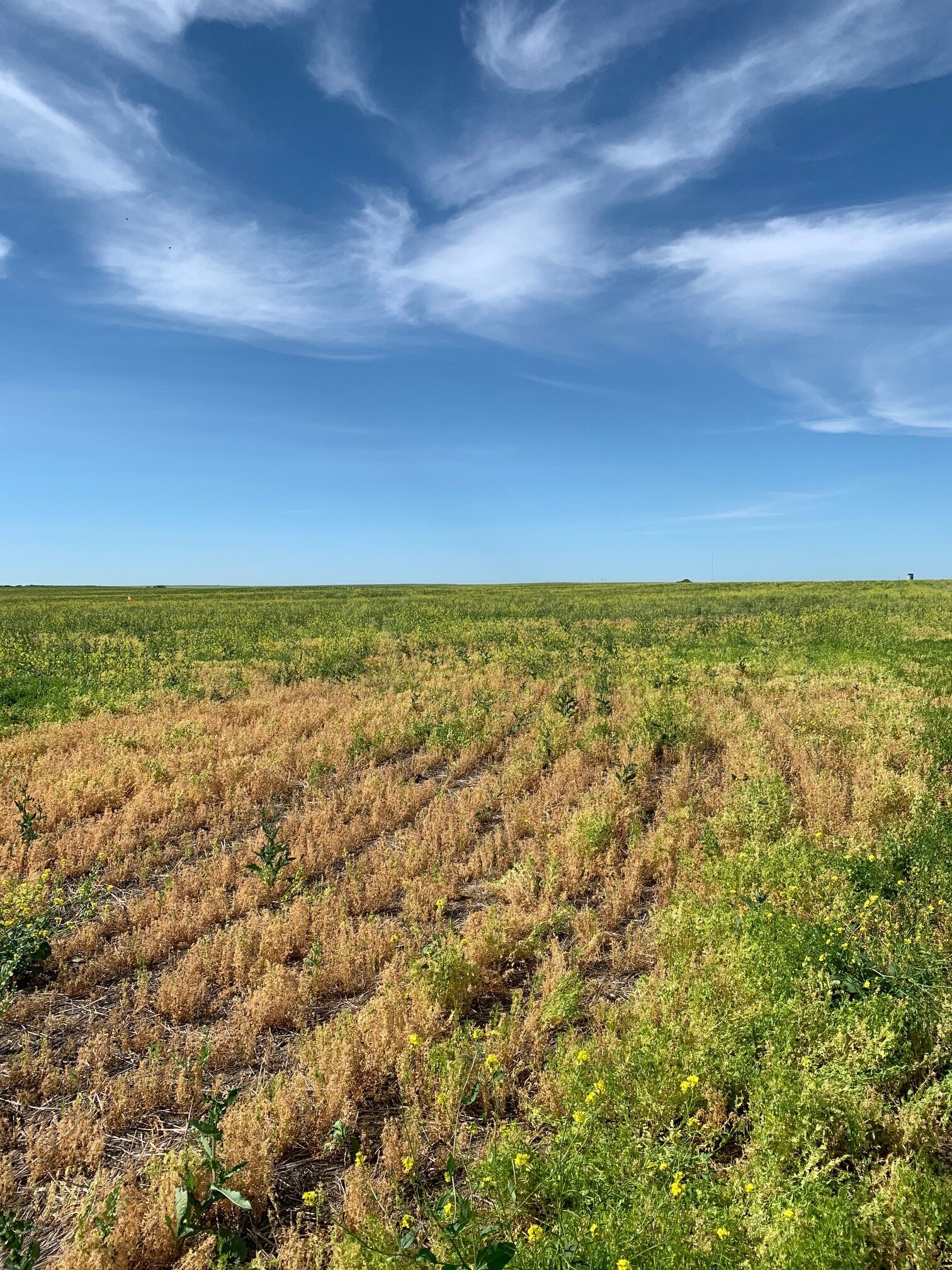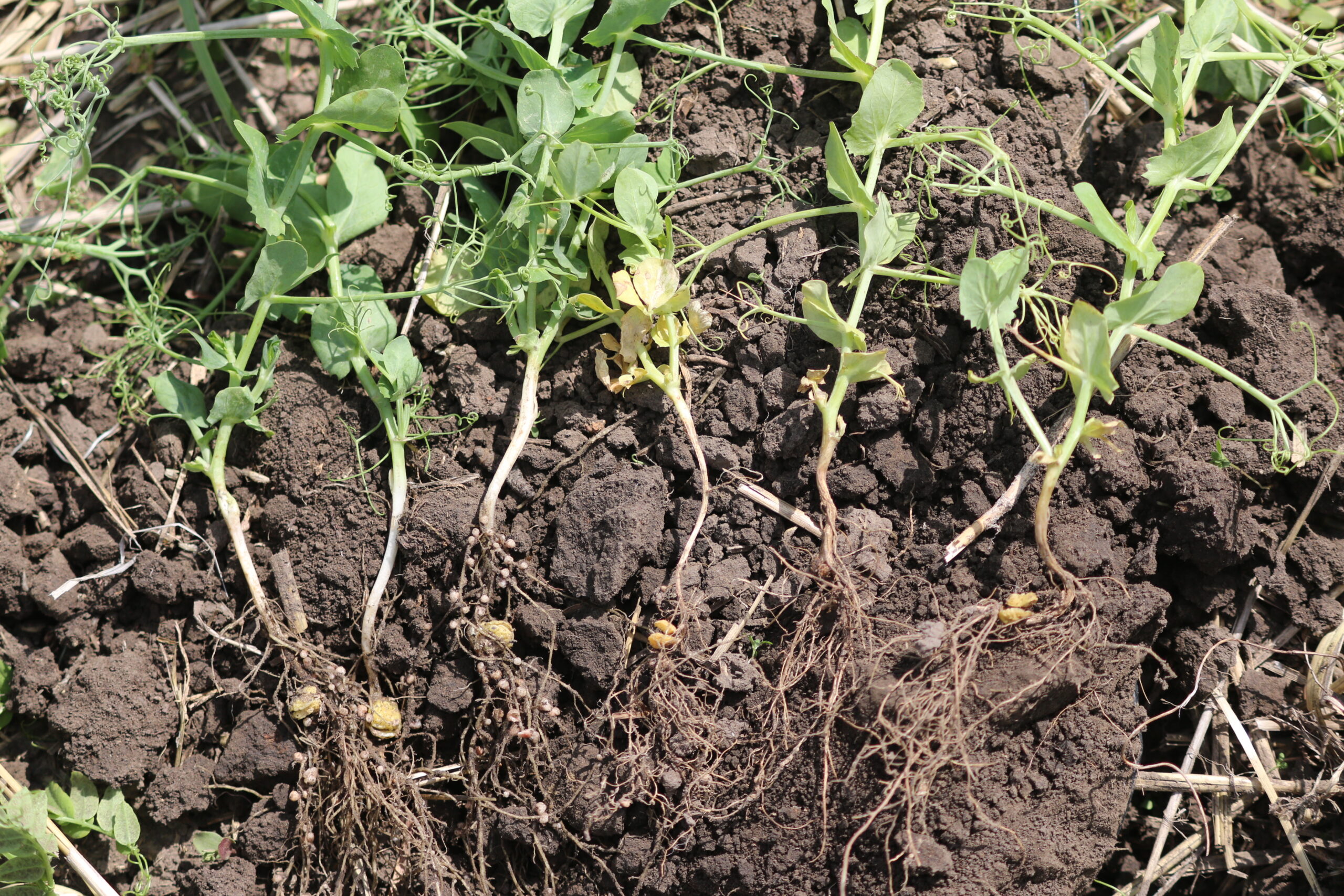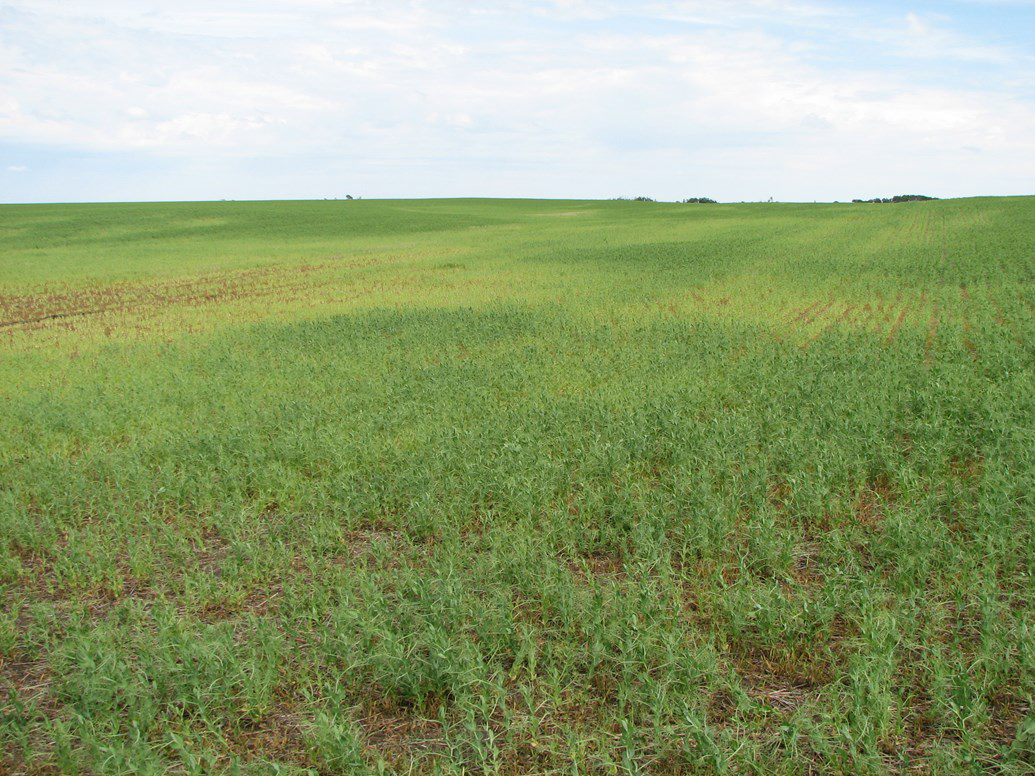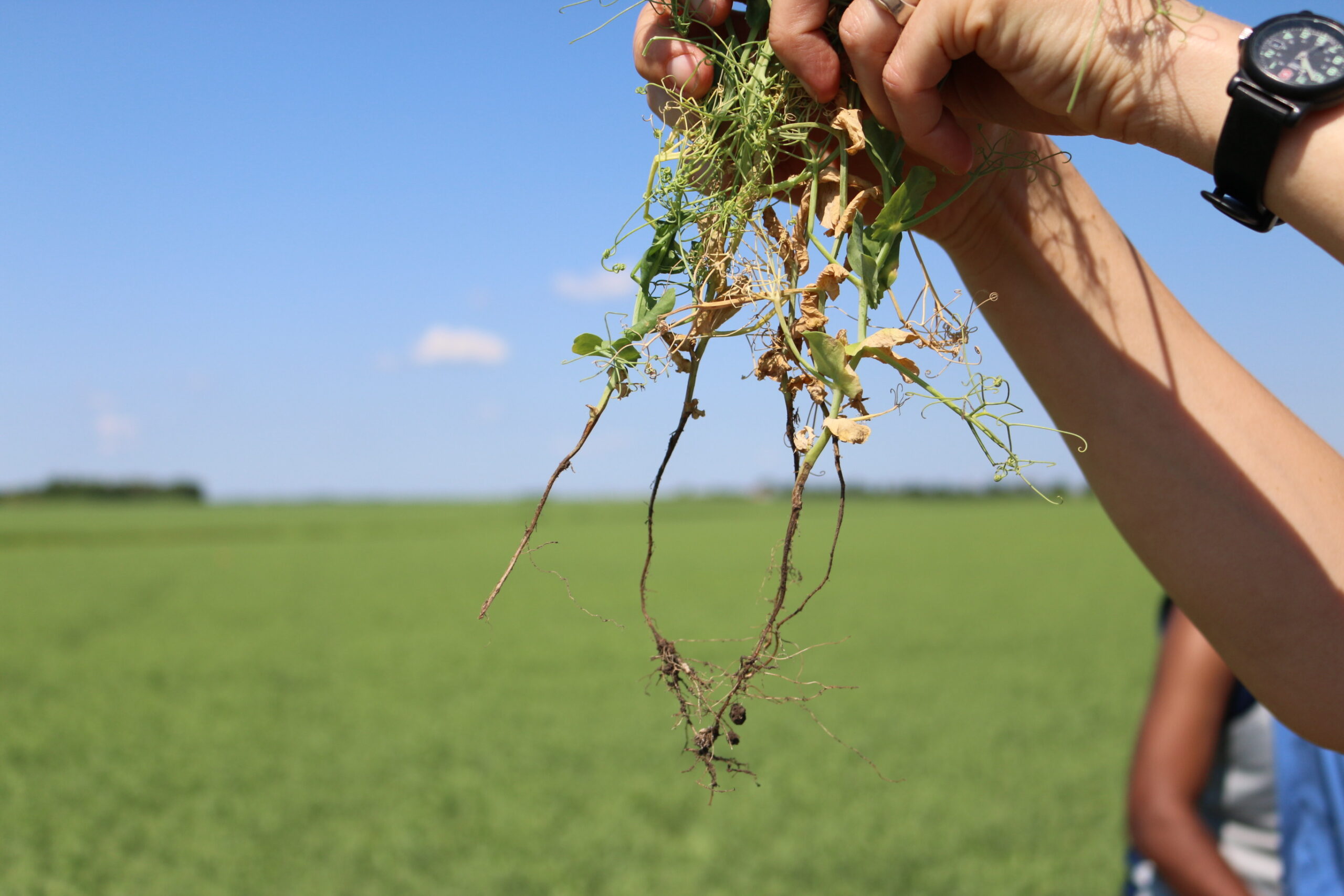The 2016 and 2020 growing seasons showed catastrophic root rot issues in peas and lentils in some areas of the province. Growers and agronomists alike are frustrated at the scale of the problem. While the root rot complex is relatively new to Saskatchewan, it is a problem in many parts of the world. Plant disease specialists and agronomists are making a concerted effort to help growers make strategic decisions about their options – but permanent solutions are hard to come by.
It is Complicated
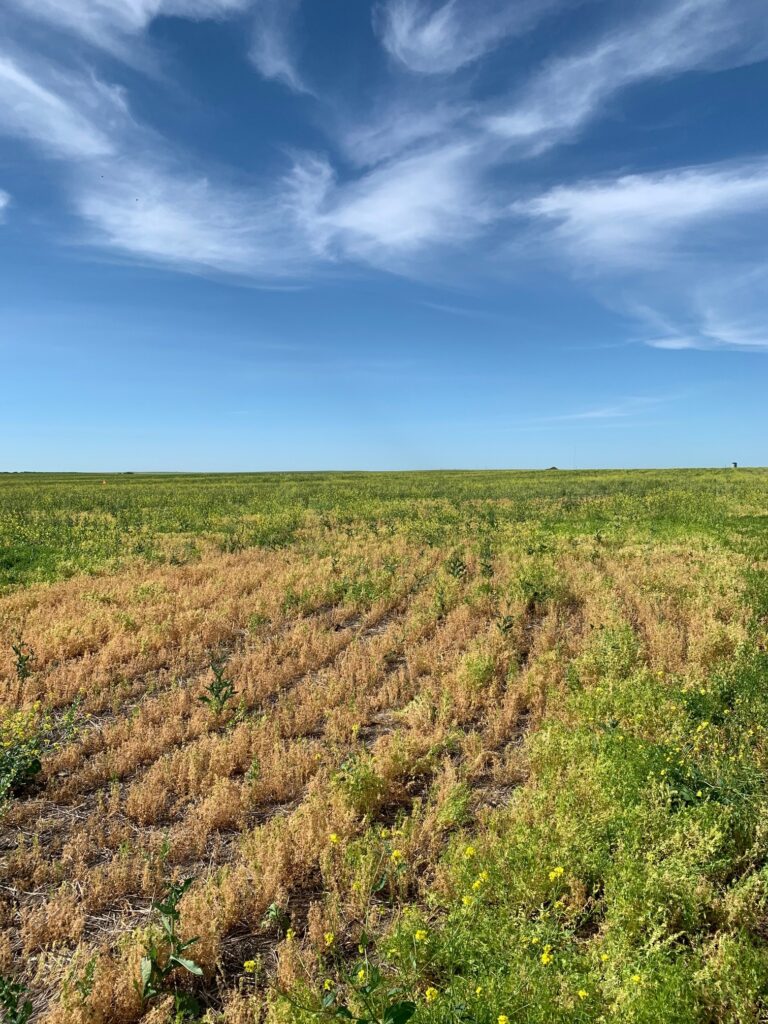
Root rots are caused by multiple genera of fungi including Aphanomyces, Rhizoctonia, Pythium, and multiple species of Fusarium. Any combination of these fungi in the soil can create disease in plants, and any treatment needs to be effective against many combinations to succeed. Research is underway to identify the fungal communities that cause root rot. There is evidence that Aphanomyces euteiches causes more damage when Fusarium is also present in fields.
Plant genetics are another complexity. Genetic resistance to Aphanomyces root rot in pea is polygenic, meaning more than one gene is required to confer partial disease resistance. Dr. Lyndon Porter, a plant pathologist in the USDA (United States Department of Agriculture) Grain Legume Genetics Physiology Research Unit, says, “In order to improve root rot resistance, you have to identify multiple genes which are involved. We haven’t come up with a single variety that is perfectly resistant to even one of the root rot pathogens. There is no silver bullet for genetic resistance. With our pulse crops, we may find a resistance gene in a wild or less developed line, but we have to get it into commercial lines through traditional breeding, and that can introduce unwanted traits that negatively impact yield, growth habit, taste, and so on.”
Dr. Marie-Laure Pilet-Nayel, plant geneticist at the Centre de Recherche de Rennes at the French National Research Institute for Agriculture, Food, and Environment (INRAE), says, “There are no highly effective solutions for Aphanomyces root rot. Chemical and biological control methods have not been shown to be effective in growers’ field conditions. Only prophylactic methods, such as diagnosing pathogens in the soil and avoiding contaminated plots, and cultural methods, such as cultivating non-host or resistant host legumes are helping to manage the disease. The large-scale efficacy of Aphanomyces root rot-tolerant varieties, recently registered in France, has not yet been assessed.”
A World-Wide Problem
Pulse root rots cause damage in fields across Northern Europe, North America, Australia, and New Zealand. In some areas of the world, there are fields that are no longer available for growing pulses susceptible to root rot, because pathogens that cause root rot are too prevalent in the soil. French farmers are having major issues with A. euteiches and Fusarium spp.
Agronomists in Saskatchewan are aware of these international issues. Their recommendations to farmers regarding longer rotations and soil testing in fields exhibiting signs of root rot show their determination to prevent long term catastrophic losses in Saskatchewan pulse production.
Research Underway

Plant pathologists are working on convenient, cost-effective solutions for growers to manage root rots in pulses. Dr. Porter has identified genetics and seed treatments as two strong contenders: “We’re identifying specific pea and lentil lines that have resistance genes effective at managing different pathogens. Breeders have been crossing these resistant lines with lines possessing desired agronomic traits to improve root rot resistance. We are also developing root rot resistant genetic markers to rapidly determine which pulse offspring have the resistance genes we desire.”
Foliar applications of phosphorous acid which stimulates the plant immune response have also been tested against Aphanomyces root rot. In irrigated areas, this is easier to apply. In dryland farming, it has also shown some suppression but has not been consistent.
Dr. Porter says, “When genetics don’t work, the simplest approach to managing root rots are chemical seed treatments that suppress or control the pathogens. Trebuset® is a new seed treatment (containing the active ingredient pydiflumetofen and currently only available in the United States) that has shown promise in controlling Fusarium root rot and chemical companies are starting to come out with more seed treatment options for growers.”
“Aphanomyces root rot is our Achilles’ heel for coming up with something that really works. Some of the work the French have done has helped to identify resistant varieties in peas. They’ve done the best job of pyramiding different genes into resistant lines.”
Dr. Pilet-Nayel confirmed that France’s first root rot tolerant pea varieties were registered in 2019. “French breeders are continuing their efforts to integrate and pyramid QTLs (Quantitative Trait Loci) to increase partial resistance of future pea varieties.”
Researchers in France have taken a multi-pronged approach to fighting root rot. Besides genetics research, they have launched a decision support tool to help farmers determine the contamination risk of a plot, similar to the decision-making tool in SPG’s Root Rot Risk fact sheet as well as inoculum potential tests on seedlings. France also recommends incorporating root-rot resistant legumes such as chickpea or faba beans in producers’ pulse rotations.
Current Recommendations
For now, the most success comes from agronomic decisions that prevent the buildup of pathogens in your soil. Dr. Porter says, “It takes a long time for breeders to develop resistant varieties, so we want these varieties to last as long as possible. Figure out the longest economical crop rotation you can between peas and lentils to prevent development of high pathogen spore loads in your soils – in the United States, at least a three-year rotation is recommended. When it comes to legume rotations, peas and lentils are considered the same crop, while chickpea, lupin, and faba bean are different.” In France, a minimum six-year rotation is recommended between peas and lentils. SPG recommends six- to eight- years on A. euteiches affected fields, and reminds farmers that many crops, including cereals, can be hosts to pathogens that lead to root rot in pulses. Dr. Porter notes that in areas of Washington and Idaho where chickpea rotations have recently become shorter, Fusarium wilt and root rot are becoming more of an issue.
Using the Root Rot Risk fact sheet and including rotational diversity in your decision making will buy breeders and chemical companies some time to come up with effective root rot solutions.
Published May 2022

